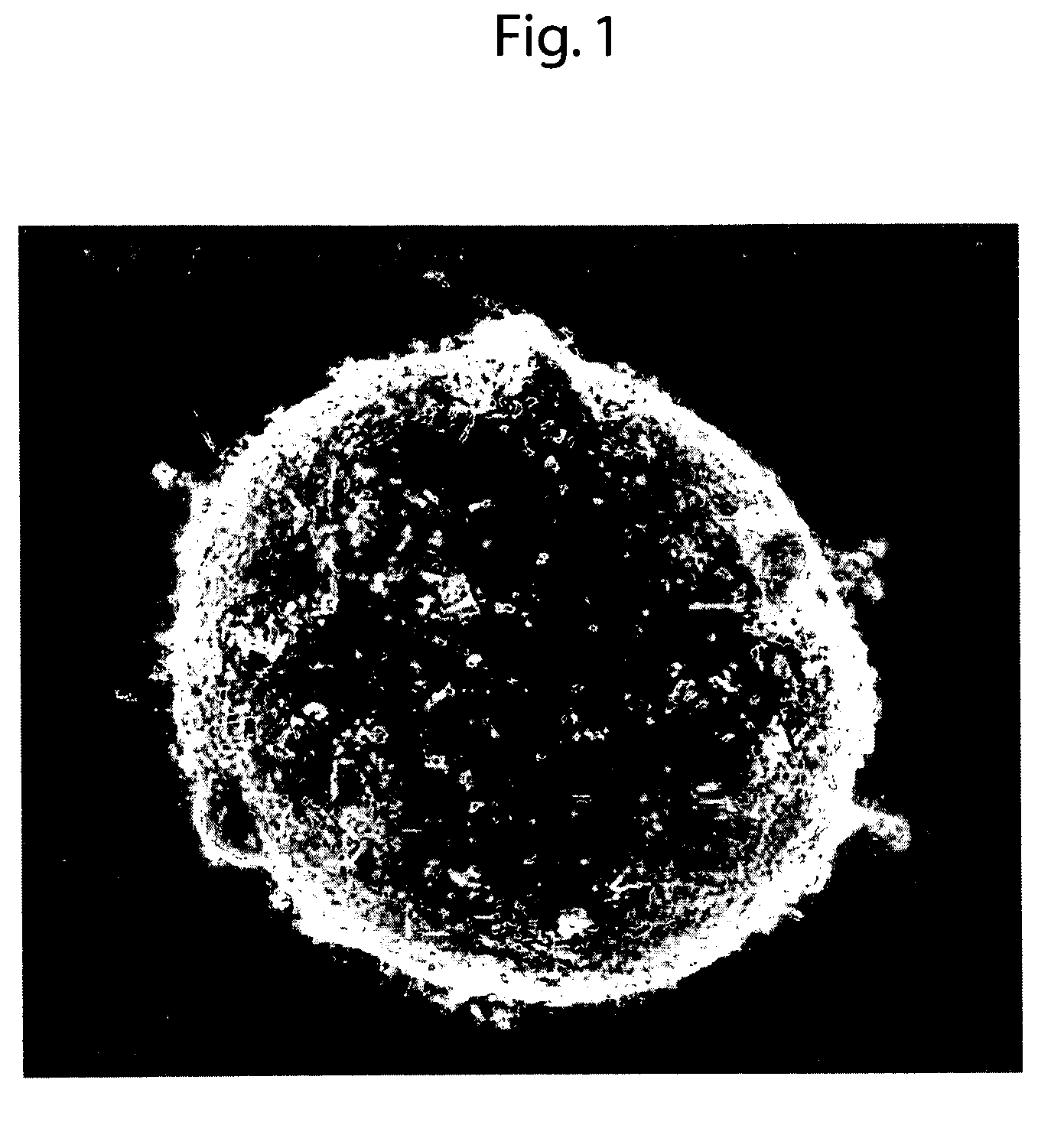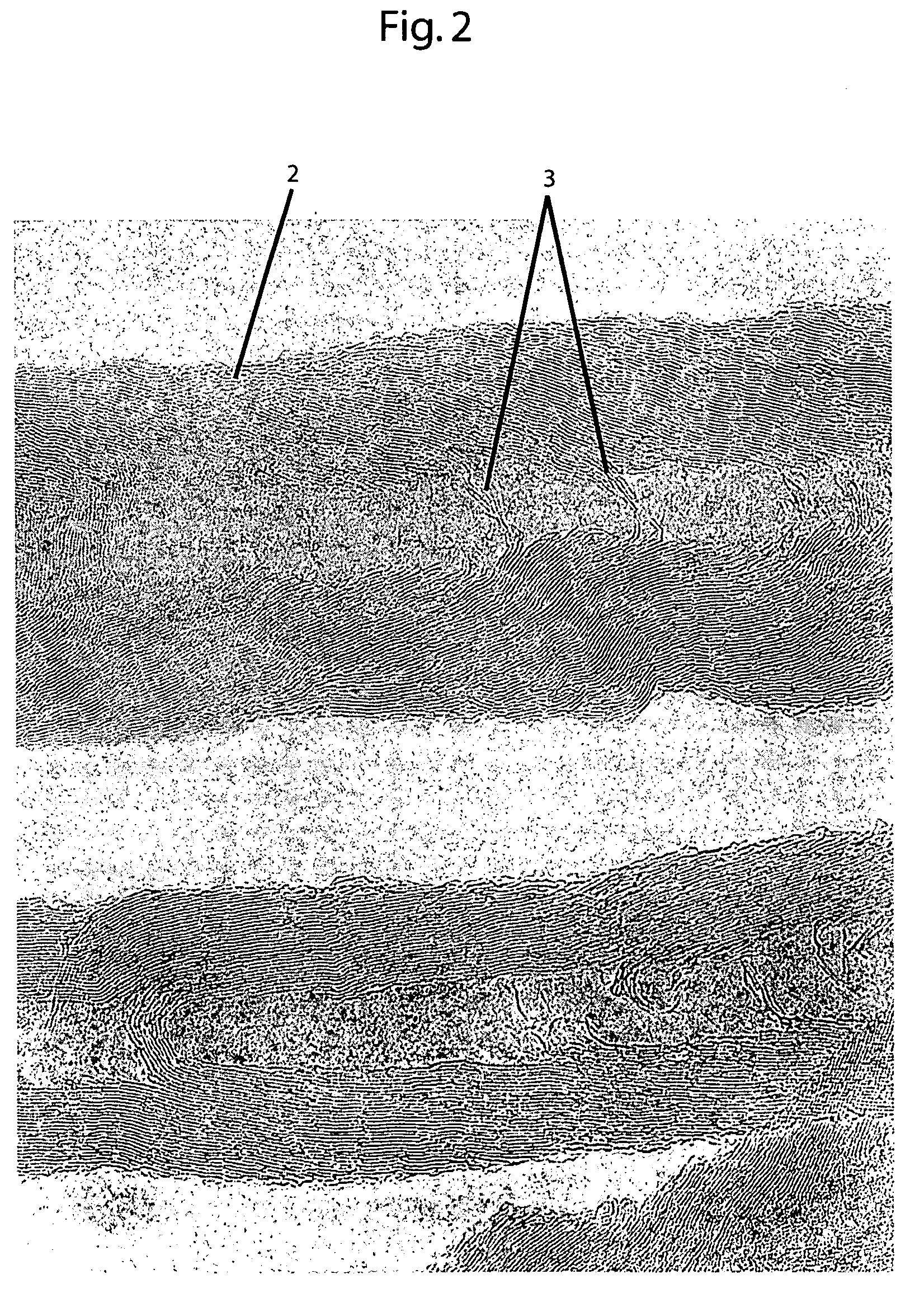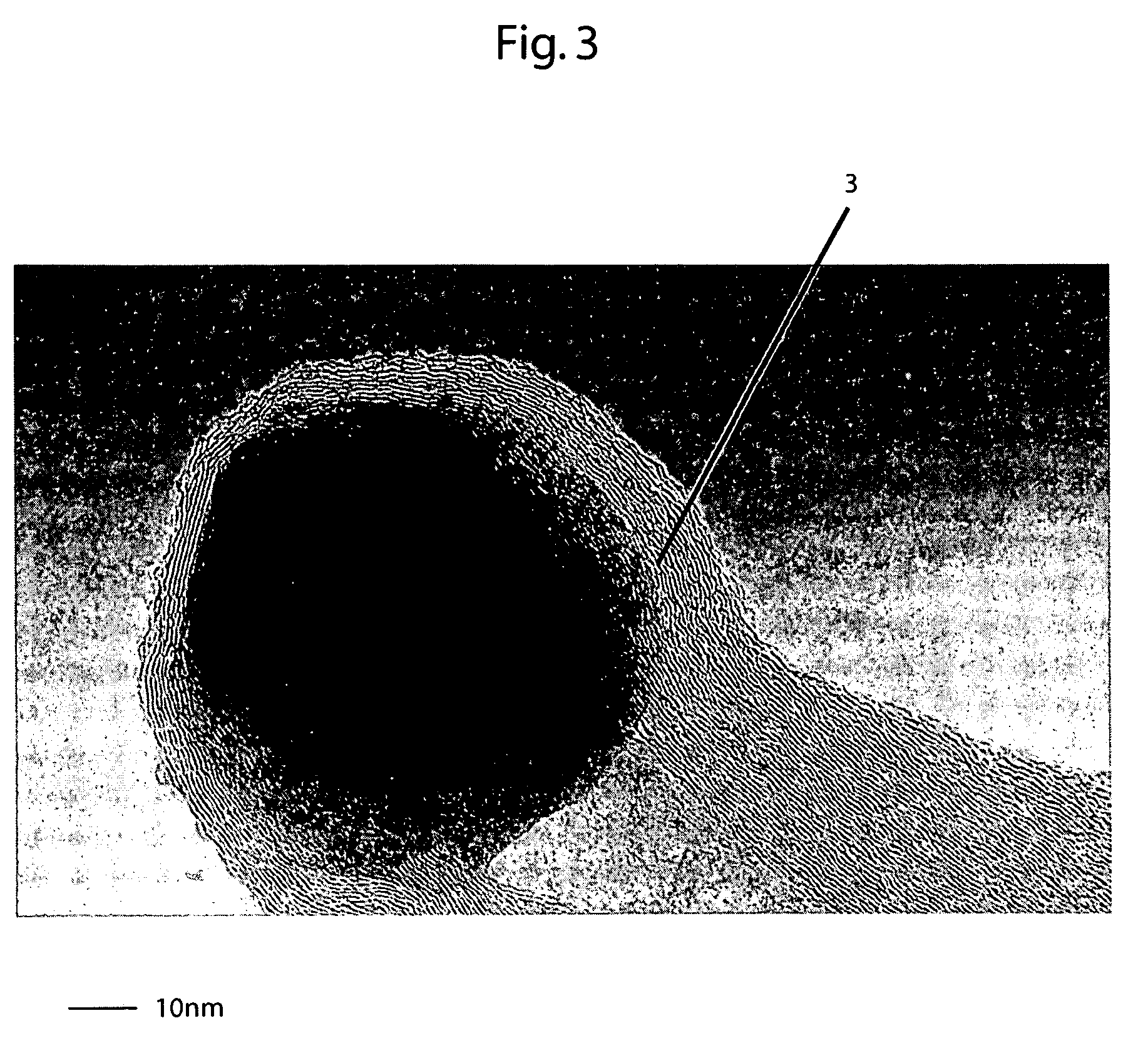Negative electrode active material for an electricity storage device and method for manufacturing the same
a technology of active materials and negative electrodes, which is applied in the field of negative electrode active materials, can solve the problems of poor dispersibility, poor conductivity, and difficulty in using fiber carbon alone, and achieves the effects of increasing the density of electrodes and electric conductivity, increasing the dispersibility of conductive materials, and high conductivity
- Summary
- Abstract
- Description
- Claims
- Application Information
AI Technical Summary
Benefits of technology
Problems solved by technology
Method used
Image
Examples
example 1
[0086]An ethanol solution was prepared by dissolving 5% by weight of nickel nitrate hexahydrate (expressed in terms of nickel metal) relative to the weight of a carbon particle precursor. A particulate phenol resin (Bellpearl R800, manufactured by Air Water Corporation) as the carbon particle precursor having an average particle size D50 of 18 μm was put as a raw material into the ethanol solution and agitated to obtain a slurry. The thus obtained slurry was heated at 70° C. while being agitated to evaporate ethanol, whereby a precursor was produced. The obtained precursor was placed in a batch type electric furnace (inner volume=10 L), heated up to 1000° C. over 3 hours at a nitrogen flow rate of 0.2 L / min, and held for 2 hours, followed by being stood to cool. To remove excessive nickel from the obtained particles, the precursor was subjected to acid pickling at 80° C. for 3 hours by using a 2NHCl solution. The acid pickling was repeated five times. The particles were dried and th...
example 2
[0090]10.5% by weigh of monolayer carbon nanotubes was added to the sample 2 obtained in Comparative Example 1, and mechanically alloyed by a ball mill, whereby a sample 4 was manufactured.
example 3
[0091]As in Example 1, the sample 2 obtained in Comparison Example 1 was placed as the precursor in a batch type electric furnace (inner volume=10 L) and heated up to 1000° C. over 3 hours at a nitrogen flow rate of 2 L / min, and nitrogen was bubbled into a toluene solution to thereby carry out a CVD process to secure the weight ratio of the fibrous carbon being equal to that of the sample 1. The subsequent process was carried out in the same manner as in Example 1 to form a sample 5.
PUM
| Property | Measurement | Unit |
|---|---|---|
| Temperature | aaaaa | aaaaa |
| Fraction | aaaaa | aaaaa |
| Thickness | aaaaa | aaaaa |
Abstract
Description
Claims
Application Information
 Login to View More
Login to View More - R&D
- Intellectual Property
- Life Sciences
- Materials
- Tech Scout
- Unparalleled Data Quality
- Higher Quality Content
- 60% Fewer Hallucinations
Browse by: Latest US Patents, China's latest patents, Technical Efficacy Thesaurus, Application Domain, Technology Topic, Popular Technical Reports.
© 2025 PatSnap. All rights reserved.Legal|Privacy policy|Modern Slavery Act Transparency Statement|Sitemap|About US| Contact US: help@patsnap.com



